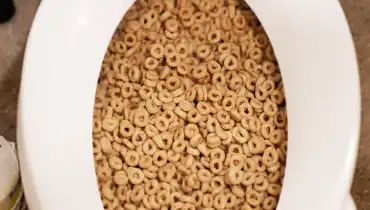What're your thoughts concerning What Can Happen If You Flush Food Down the Toilet??

Intro
Many individuals are typically confronted with the dilemma of what to do with food waste, specifically when it comes to leftovers or scraps. One common question that arises is whether it's alright to purge food down the commode. In this short article, we'll look into the reasons that individuals could consider purging food, the repercussions of doing so, and alternate techniques for correct disposal.
Reasons individuals could think about flushing food
Lack of recognition
Some individuals might not understand the possible damage brought on by flushing food down the bathroom. They may wrongly think that it's a harmless method.
Comfort
Flushing food down the commode may feel like a fast and very easy remedy to dealing with unwanted scraps, particularly when there's no neighboring trash bin offered.
Idleness
In some cases, people might just select to flush food out of large laziness, without taking into consideration the effects of their activities.
Consequences of flushing food down the commode
Environmental impact
Food waste that winds up in waterways can add to contamination and harm marine environments. Furthermore, the water used to flush food can strain water sources.
Pipes problems
Flushing food can result in stopped up pipelines and drains, triggering pricey plumbing repair work and inconveniences.
Kinds of food that must not be flushed
Coarse foods
Foods with fibrous appearances such as celery or corn husks can get entangled in pipes and trigger clogs.
Starchy foods
Starchy foods like pasta and rice can absorb water and swell, bring about obstructions in pipes.
Oils and fats
Greasy foods like bacon or food preparation oils need to never ever be flushed down the commode as they can solidify and cause clogs.
Appropriate disposal techniques for food waste
Utilizing a waste disposal unit
For homes equipped with waste disposal unit, food scraps can be ground up and purged via the plumbing system. However, not all foods appropriate for disposal in this fashion.
Recycling
Particular food product packaging materials can be reused, lowering waste and lessening ecological influence.
Composting
Composting is an environmentally friendly method to dispose of food waste. Organic products can be composted and made use of to enrich soil for horticulture.
The importance of appropriate waste monitoring
Decreasing ecological harm
Appropriate waste administration practices, such as composting and recycling, help decrease contamination and maintain natural resources for future generations.
Shielding pipes systems
By preventing the practice of flushing food down the commode, property owners can avoid expensive pipes fixings and preserve the integrity of their pipes systems.
Conclusion
Finally, while it may be tempting to flush food down the toilet for ease, it is very important to recognize the possible repercussions of this action. By taking on appropriate waste monitoring practices and disposing of food waste sensibly, individuals can contribute to healthier plumbing systems and a cleaner setting for all.
FLUSH FOOD DOWN THE TOILET?
FLUSHING FOOD CAN CAUSE BLOCKED DRAINS IN YOUR HOME
All of the plumbing fixtures in your home are connected to the same sewer pipe outside of your home. This outdoor sewer pipe is responsible for transporting all the wastewater from your home to the Council sewer mains. Even small pieces of food that go down the kitchen sink can cause problems for your sewer. It should therefore be obvious that flushing larger bits of food, such as meat, risks a clog in either the toilet itself or the sewer pipes. Flushing greasy food is even more problematic because oil coagulates when it cools, coating the interior lining of your pipes.
THE TOILET IS NOT A BIN
Food isn’t the only thing that people shouldn’t be flushing down the toilet. People use the toilet to dispose of all kinds of things such as tampons, makeup wipes, dental floss, kitty litter and even underwear. Water goes to great lengths to educate residents about the high costs and stress placed on wastewater treatment systems simply from people flushing the wrong stuff down the toilet. It costs taxpayers millions of dollars each year, and homeowners thousands in blocked drain repairs.
FLUSHING FOOD IS A WASTE OF WATER
Flushing food is a waste of our most precious resource - water. In June this year Level 1 water restrictions were introduced to protect water supply from drought conditions. Much of New South Wales continues to be affected by prolonged drought with recent figures revealing up to 97 per cent of the state remains in drought. Depending on whether you have a single or dual flush toilet, every single flush uses between five and 11 litres of water. In the current climate this is a huge amount of water to be wasting on flushing food that should be placed in the bin (or better yet, the compost).
https://www.jabplumbingsolutions.com.au/blog/can-you-flush-food-down-the-toilet

Hopefully you liked our part about Think Twice Before Flushing Food Down Your Toilet. Thanks a ton for spending some time to browse our piece of content. Are you aware of another person who is curious about the niche? Why not promote it. Thank-you for your time invested reading it.
Visit
Comments on “Can You to Flush Food in the Toilet?”